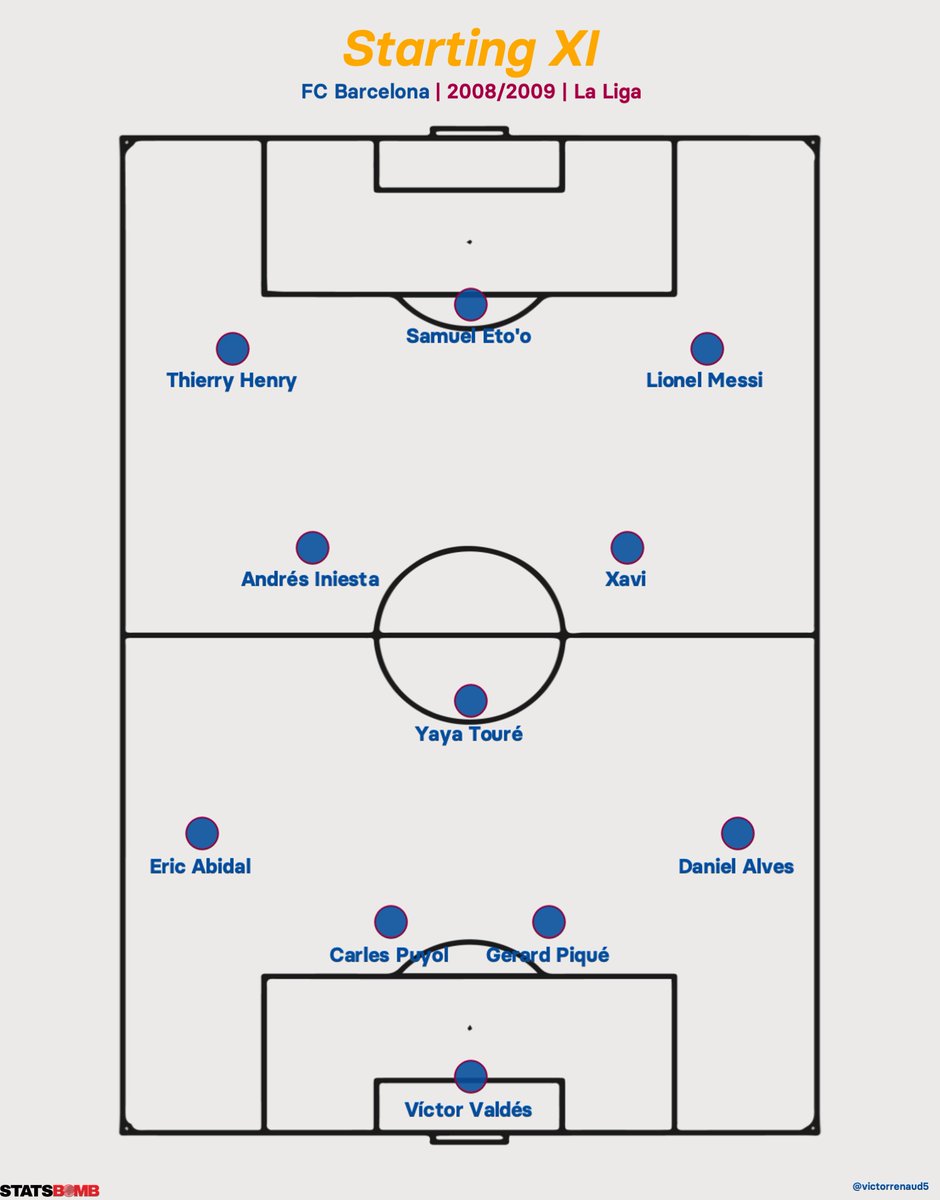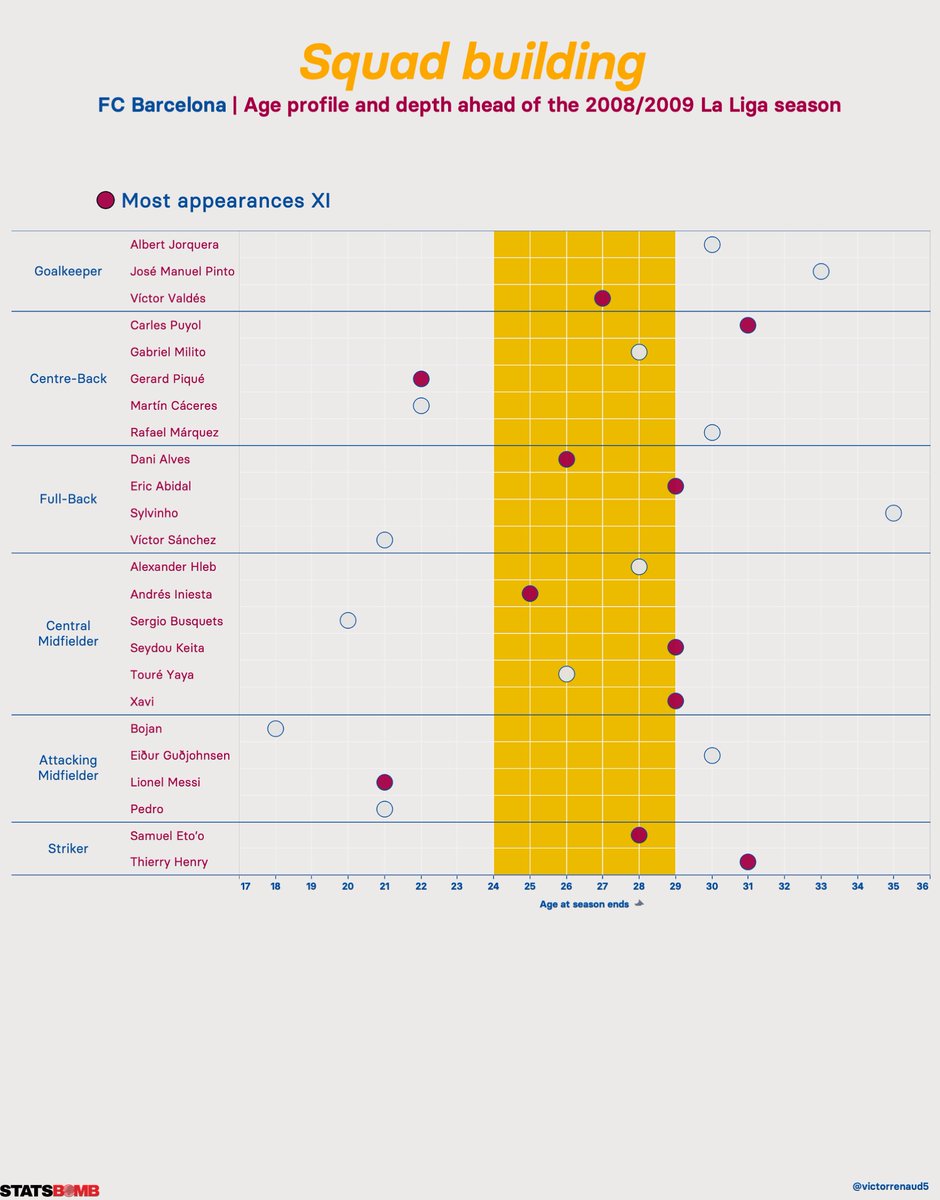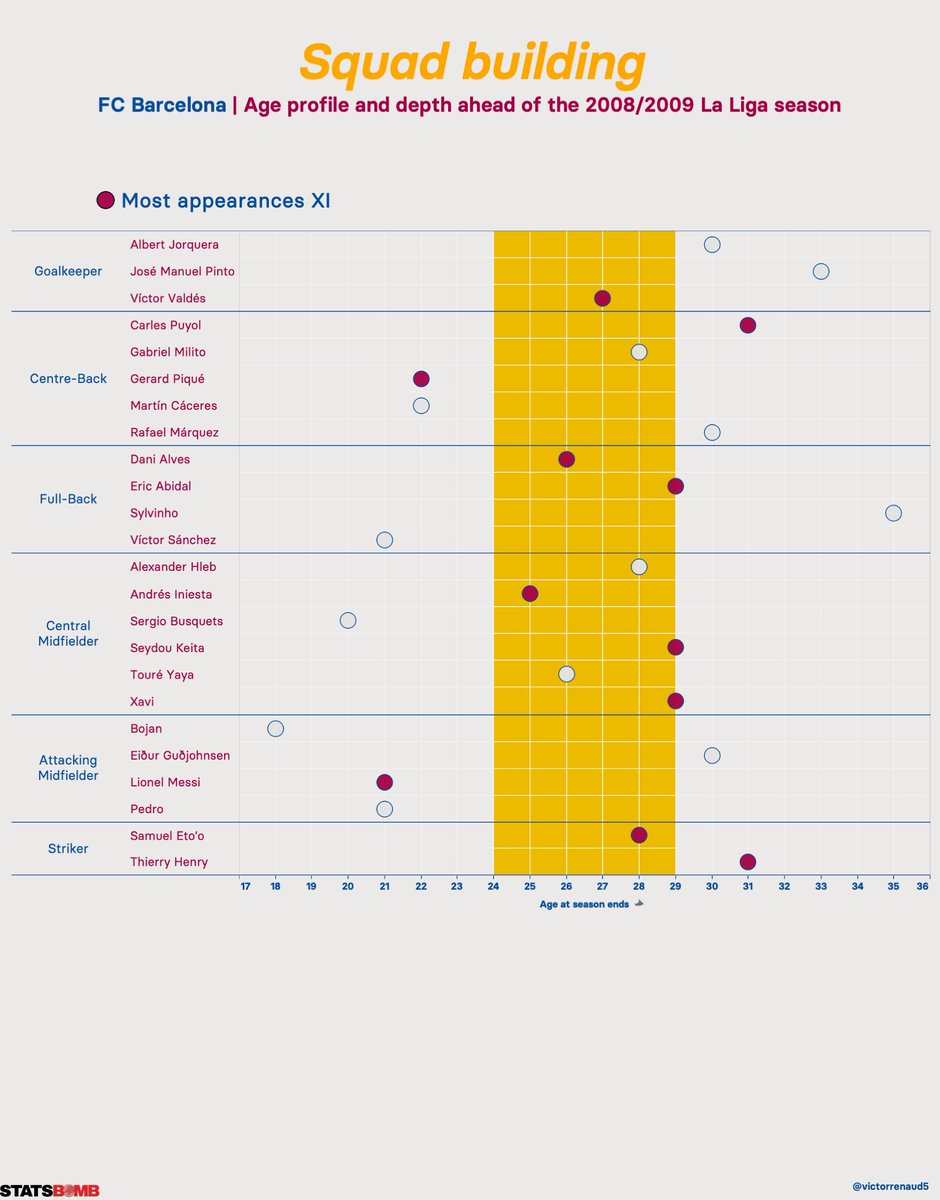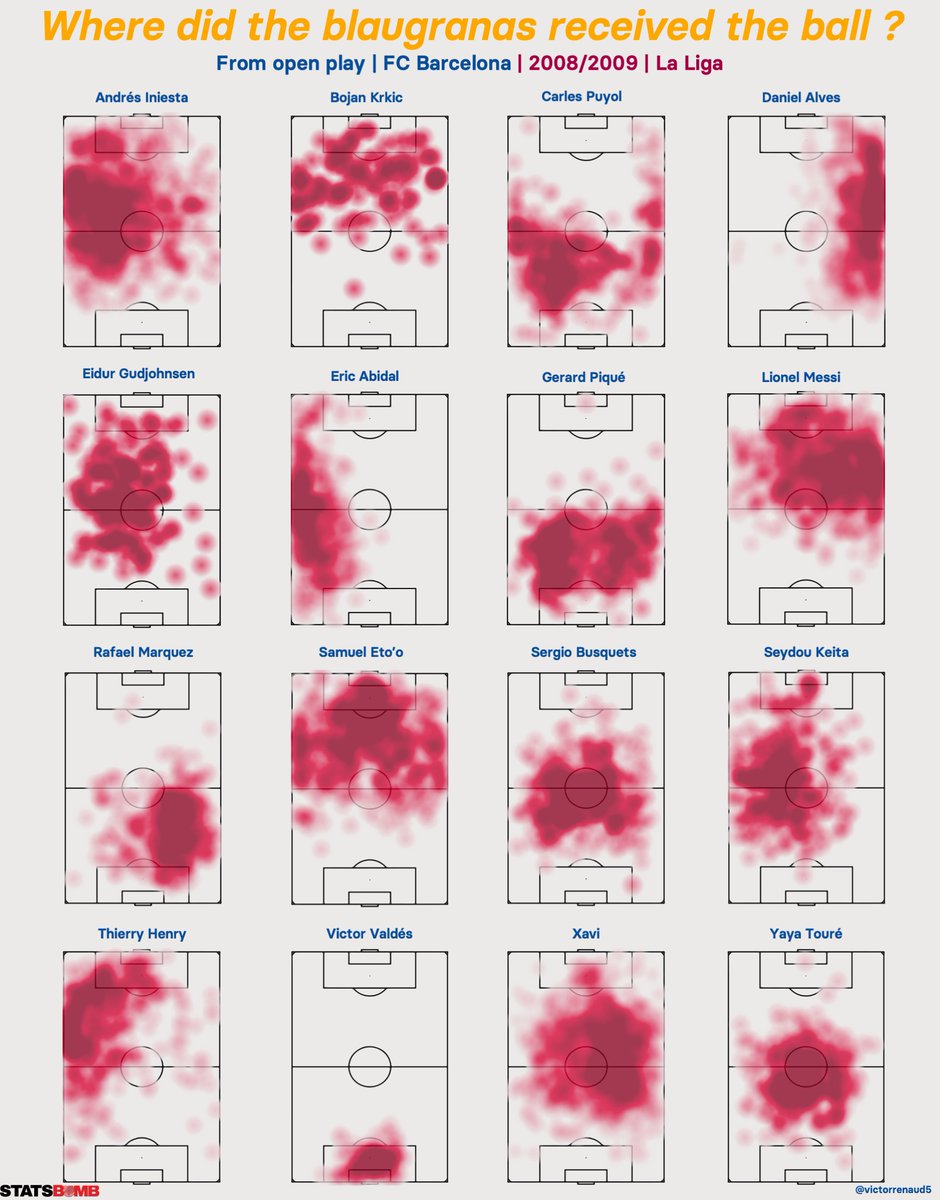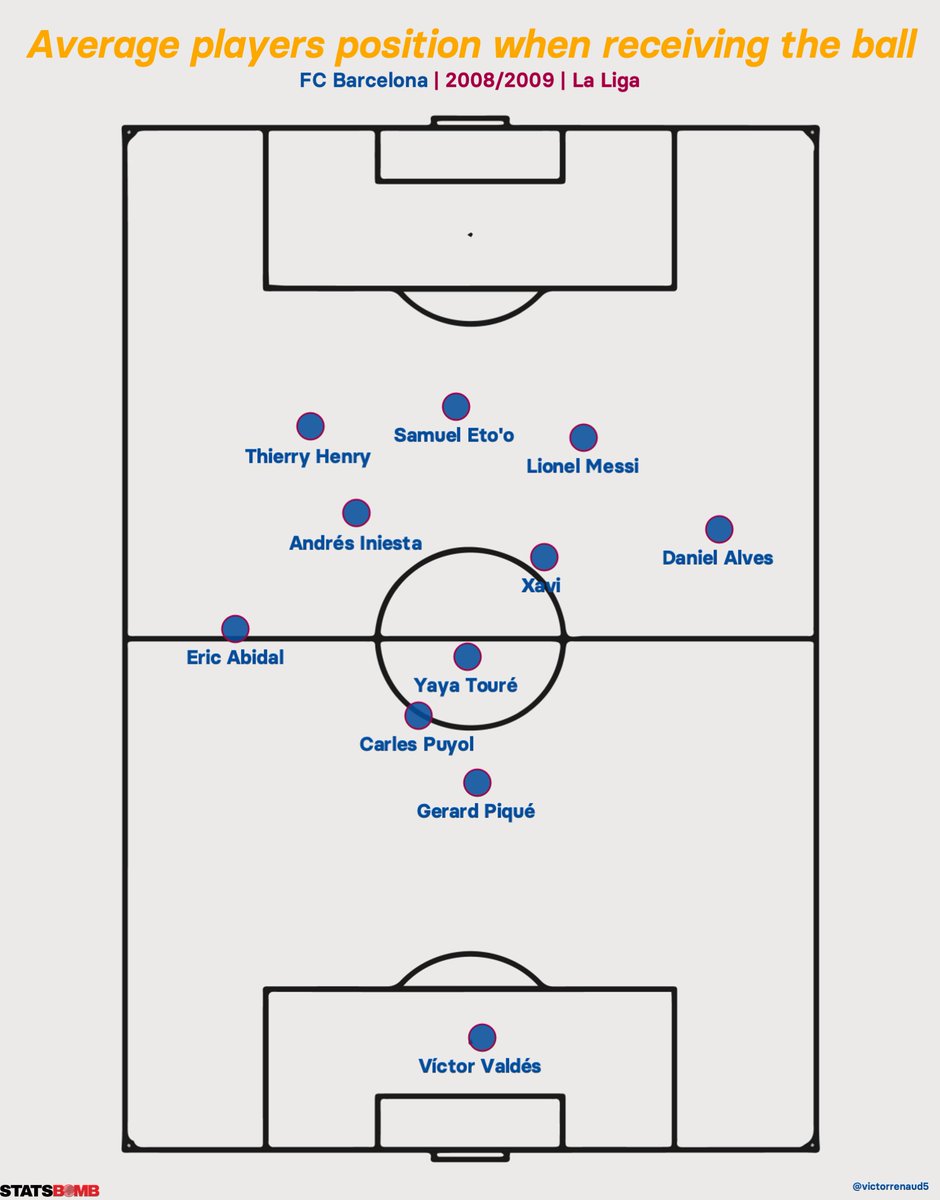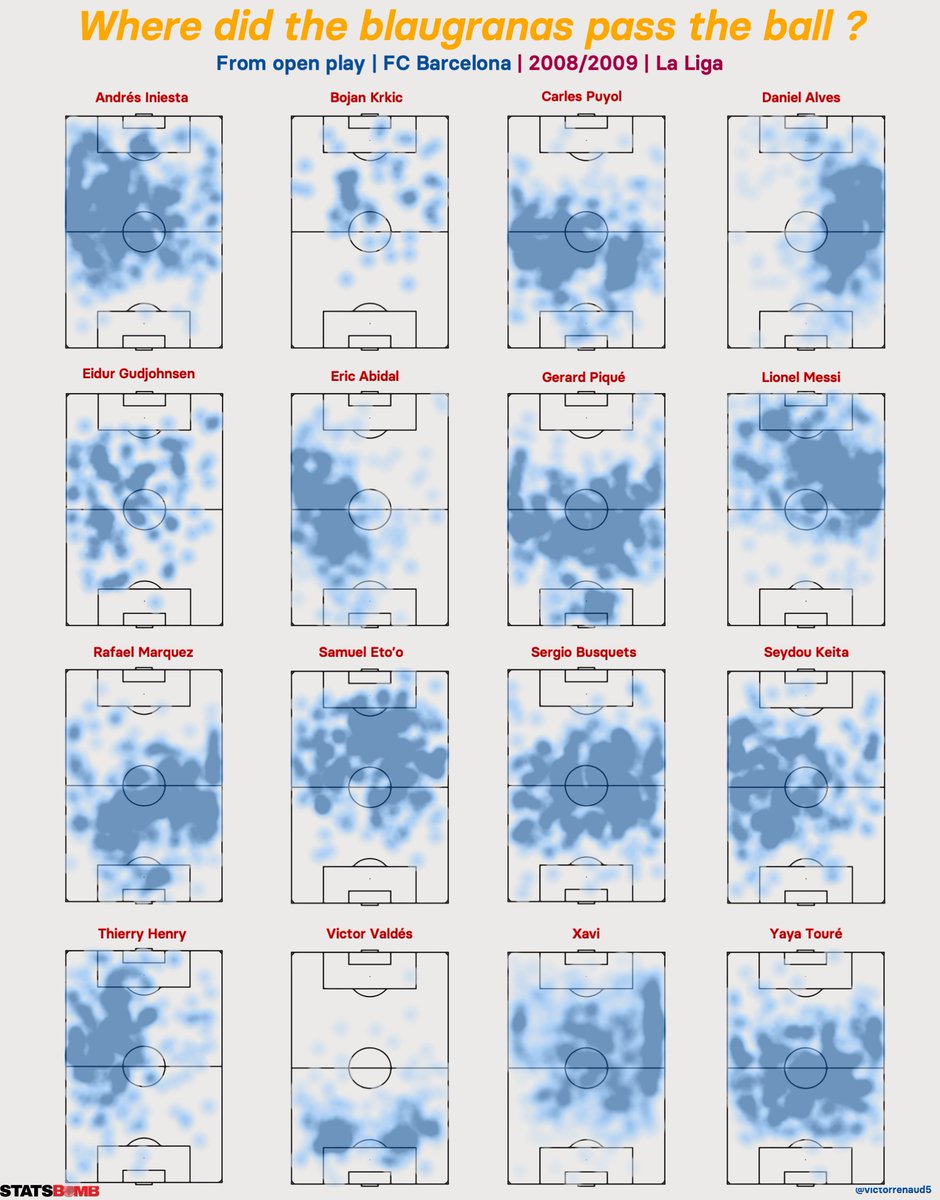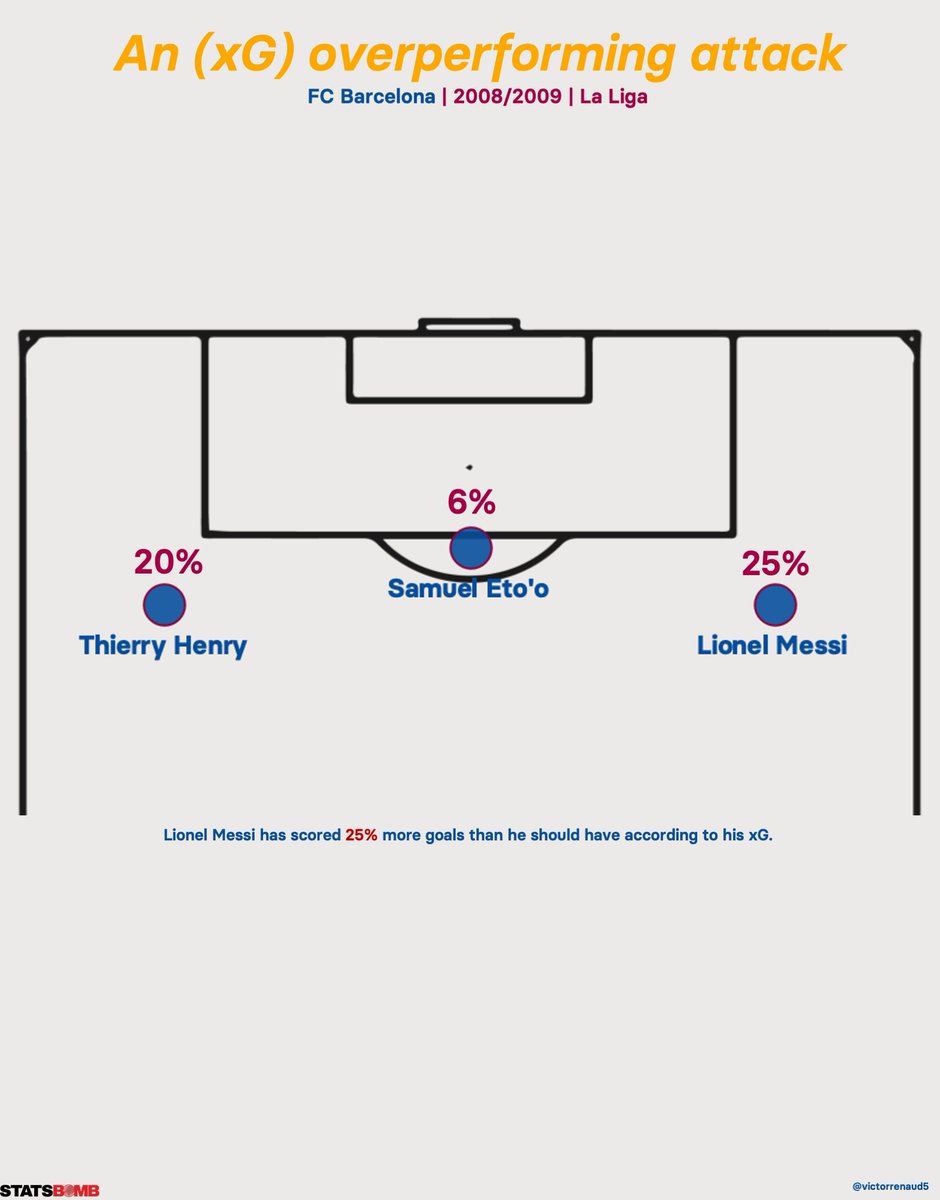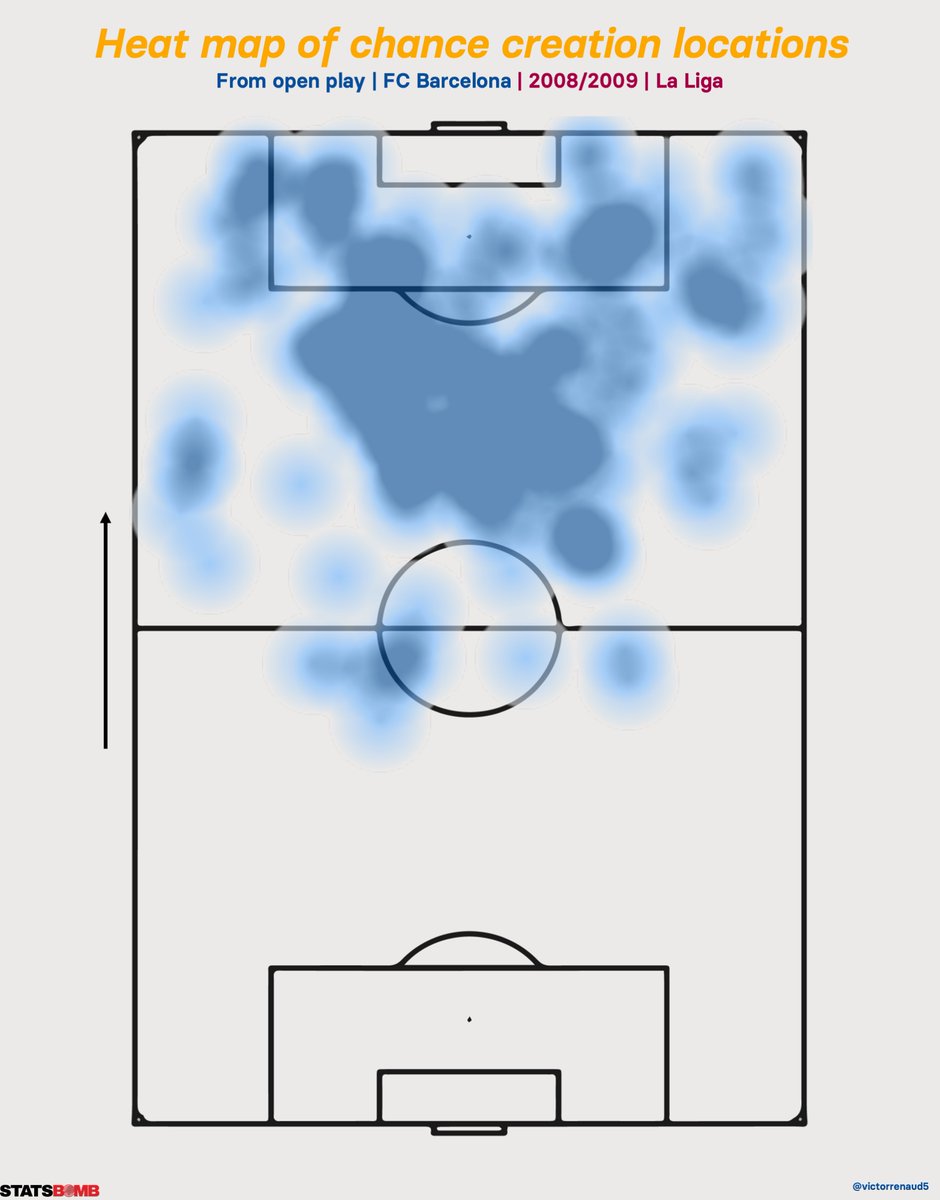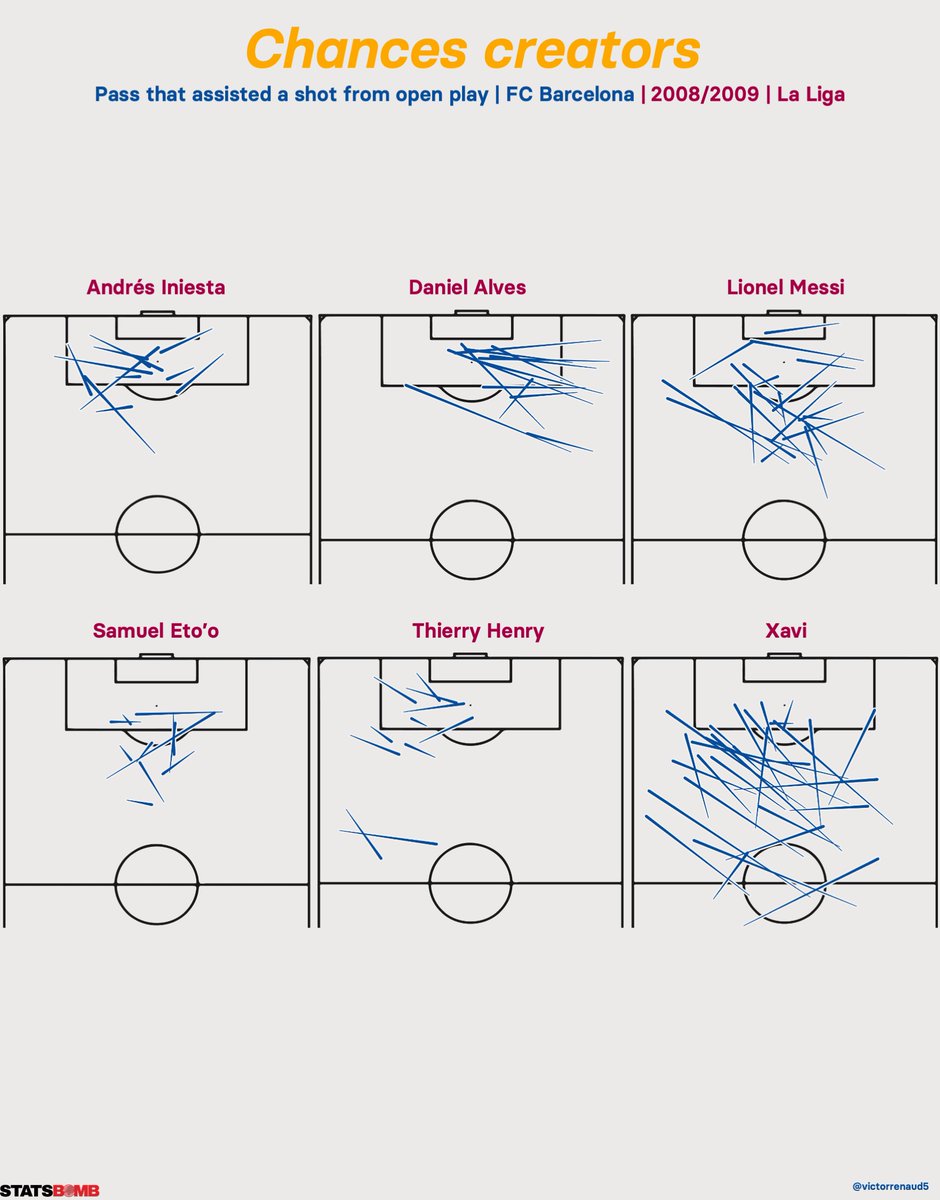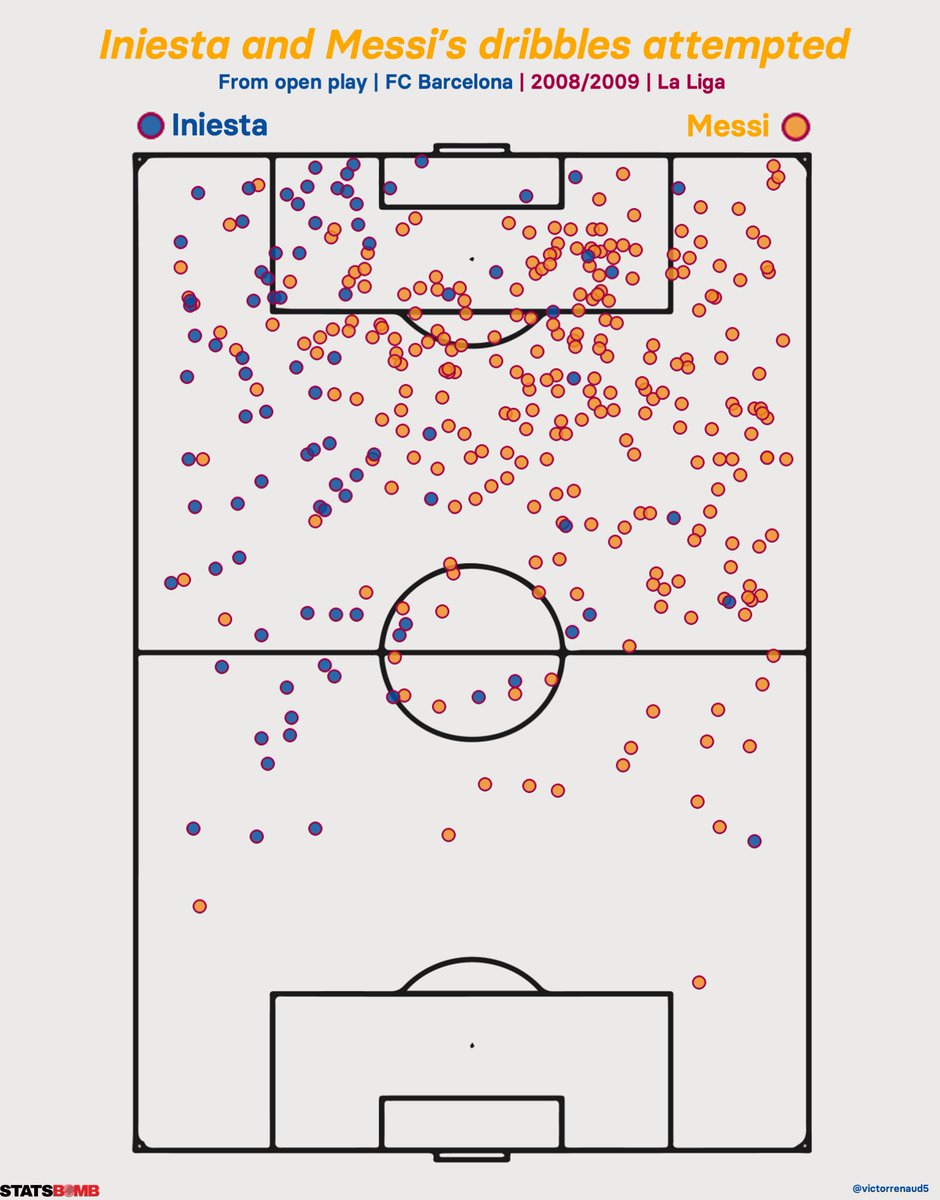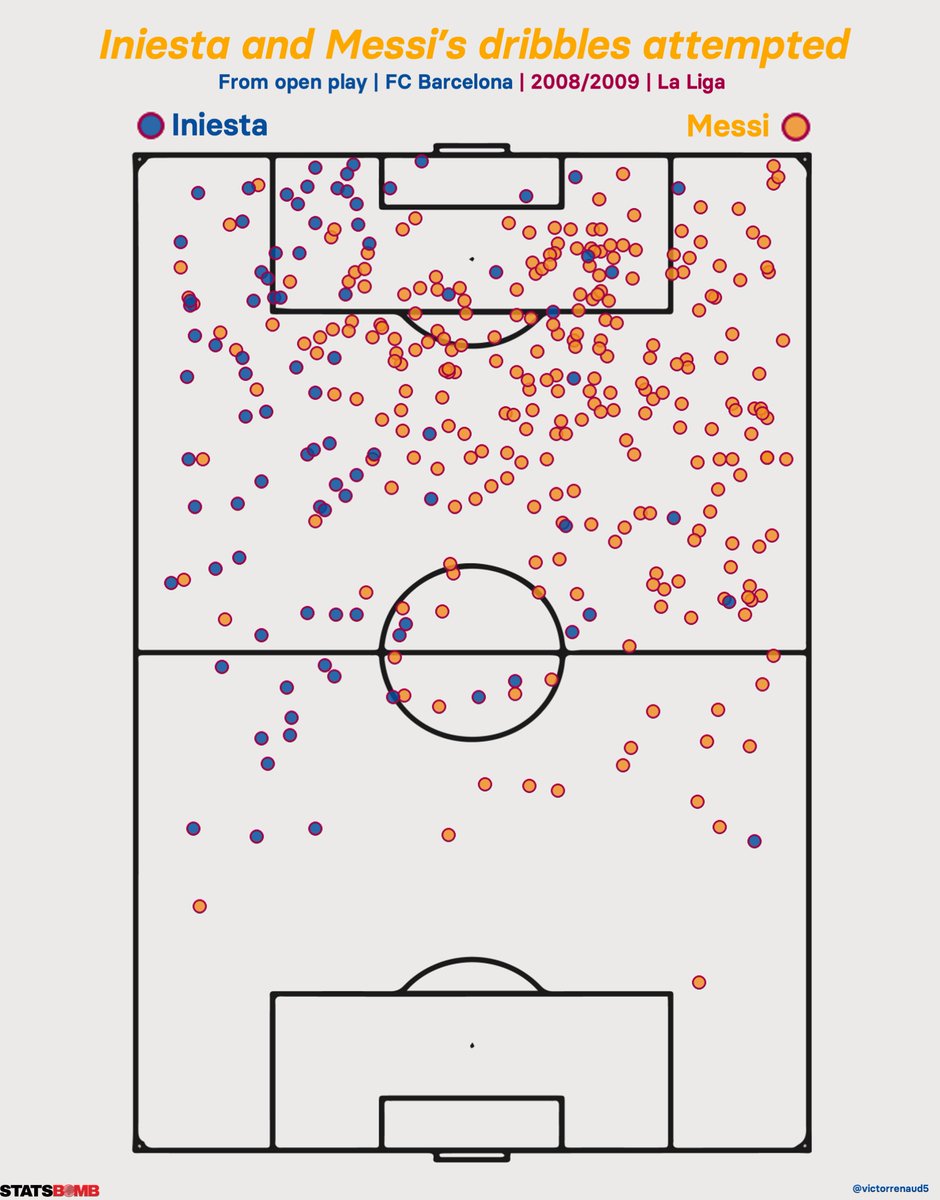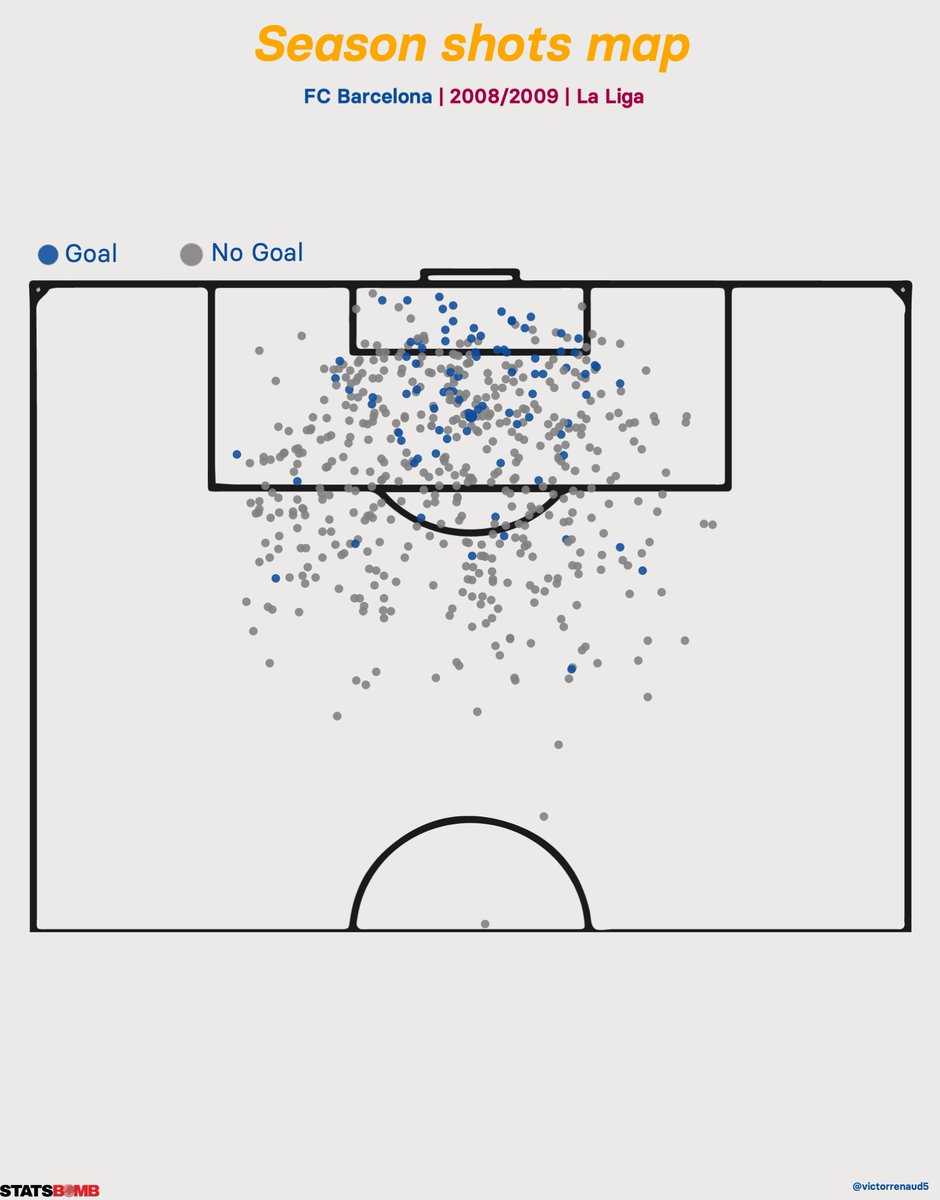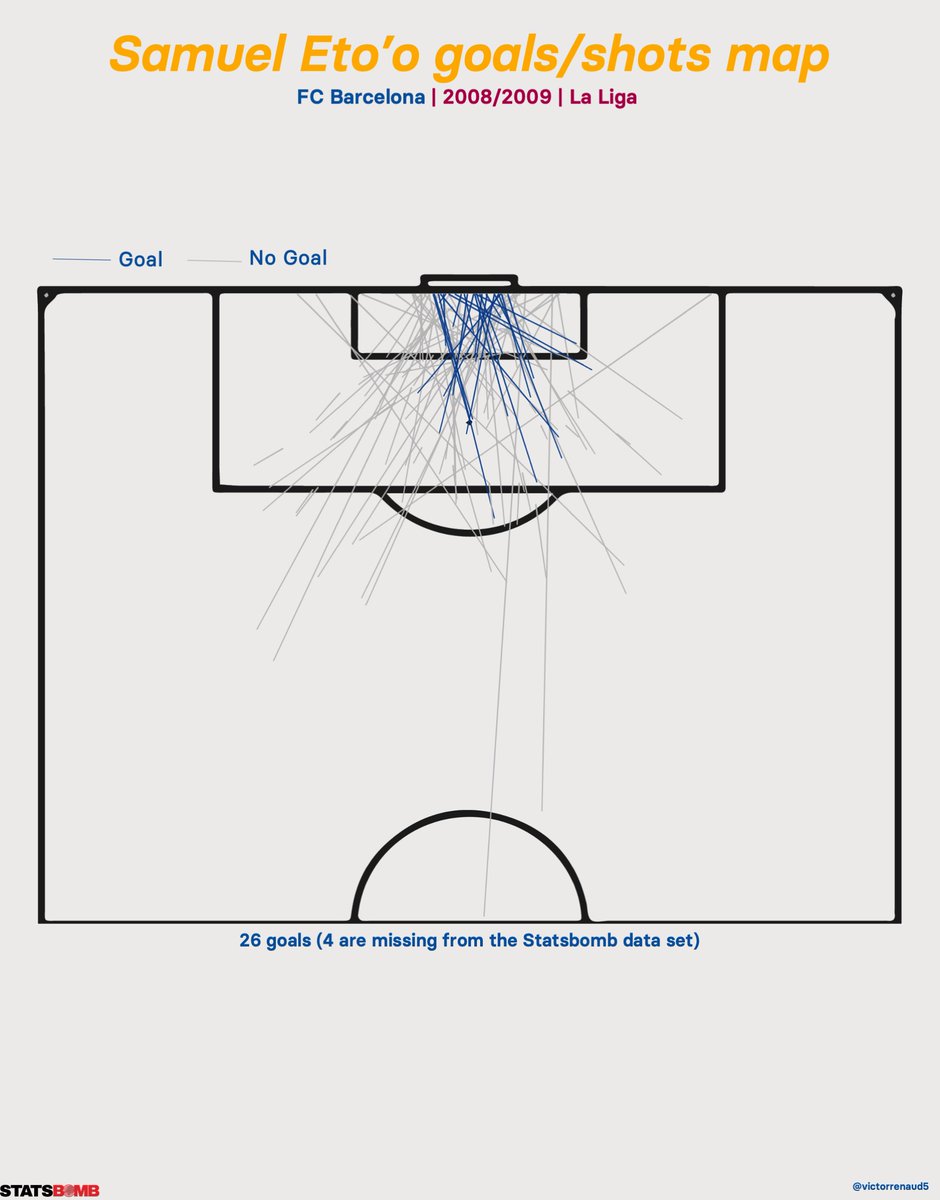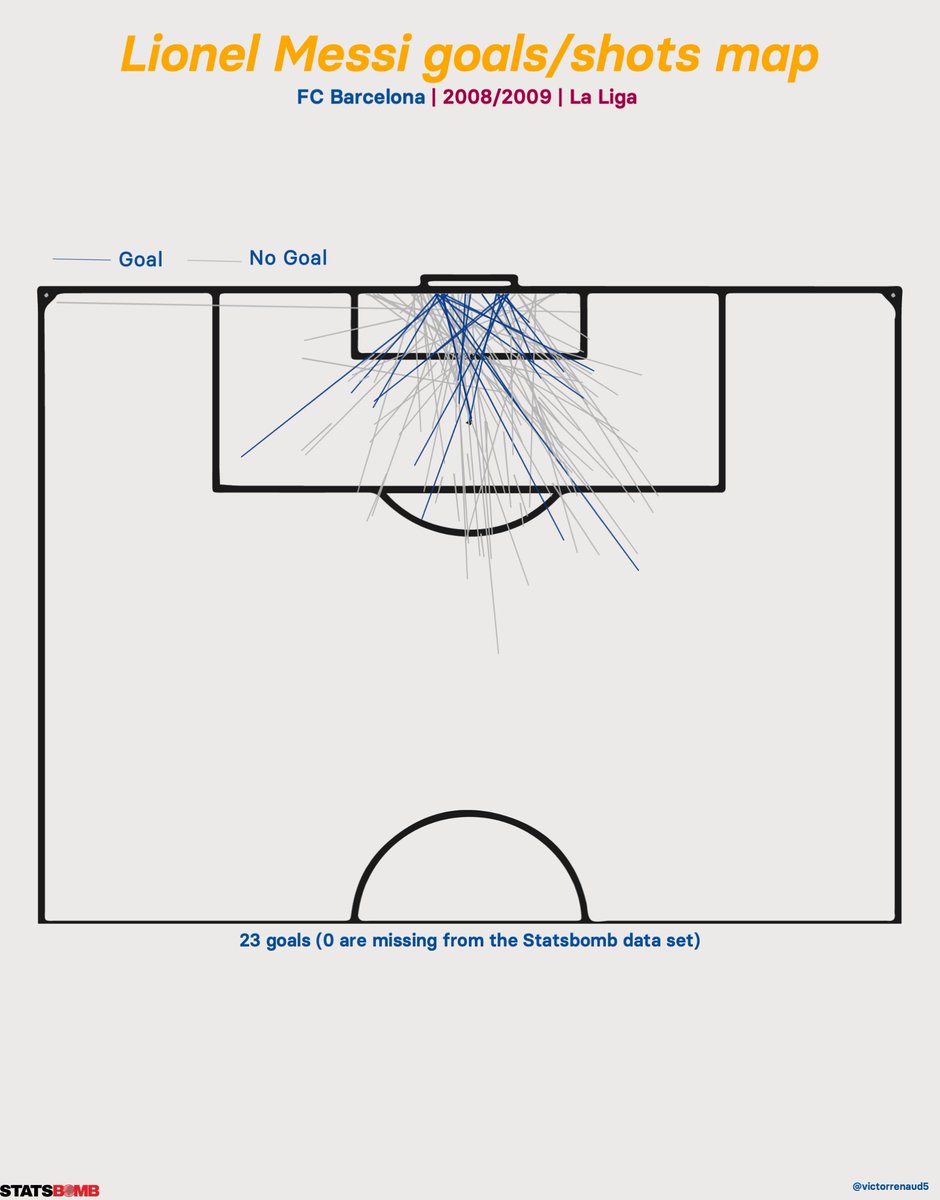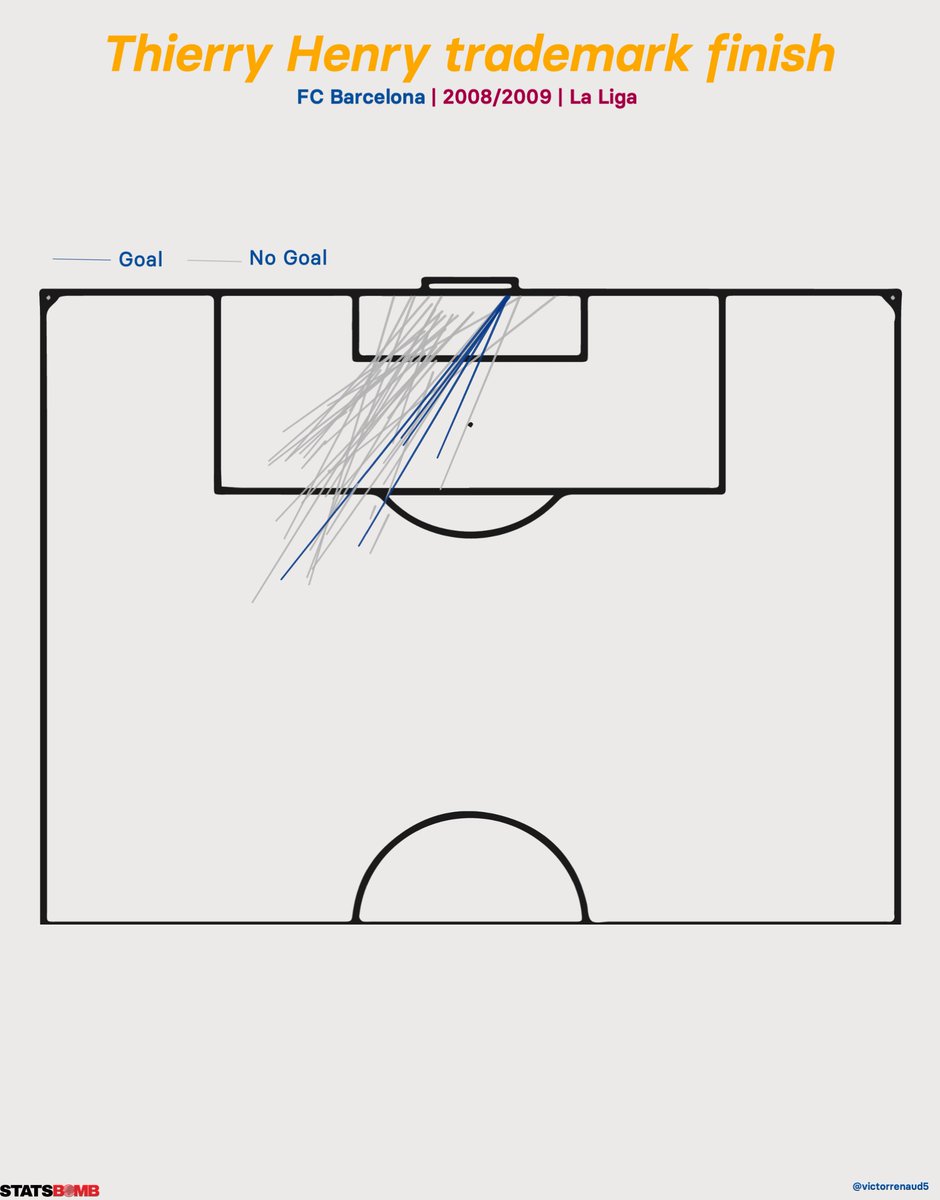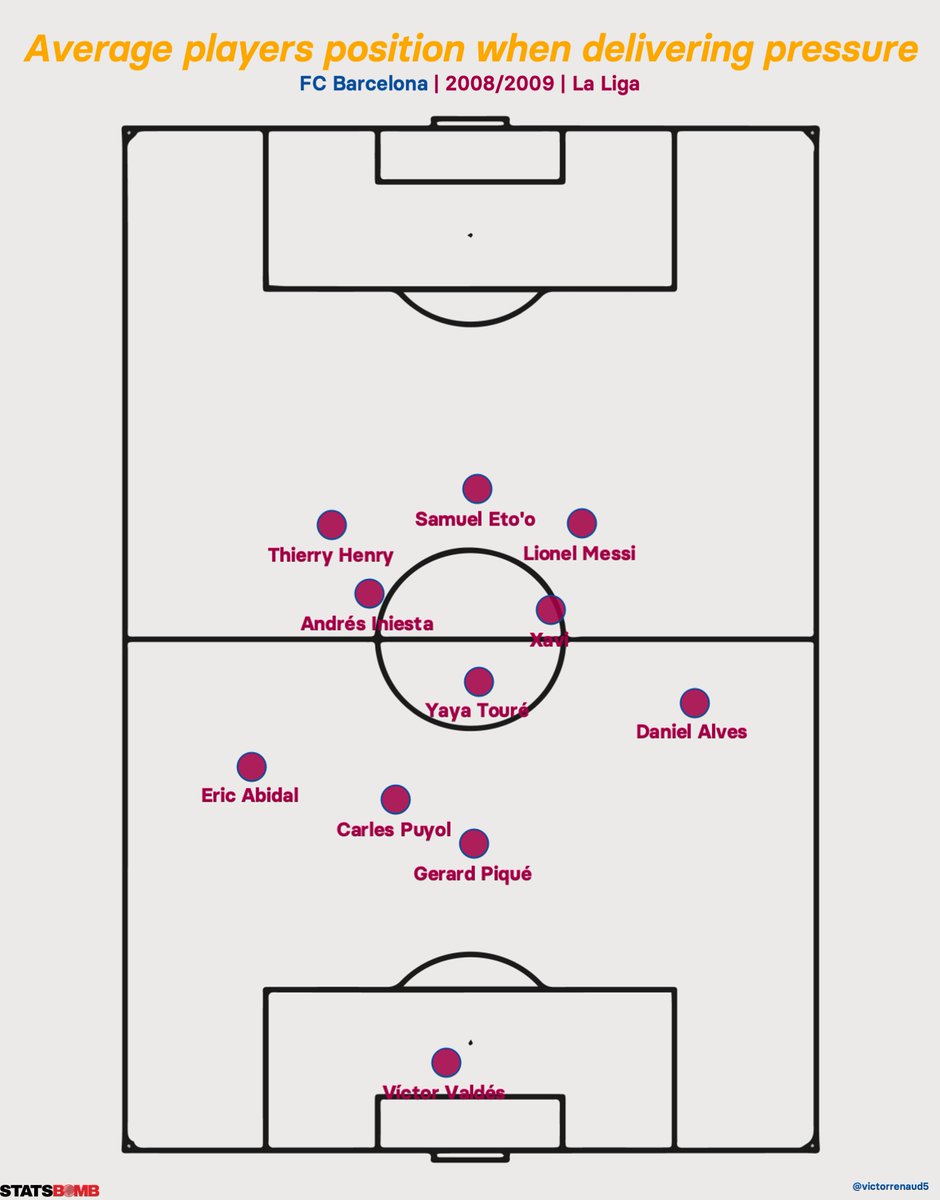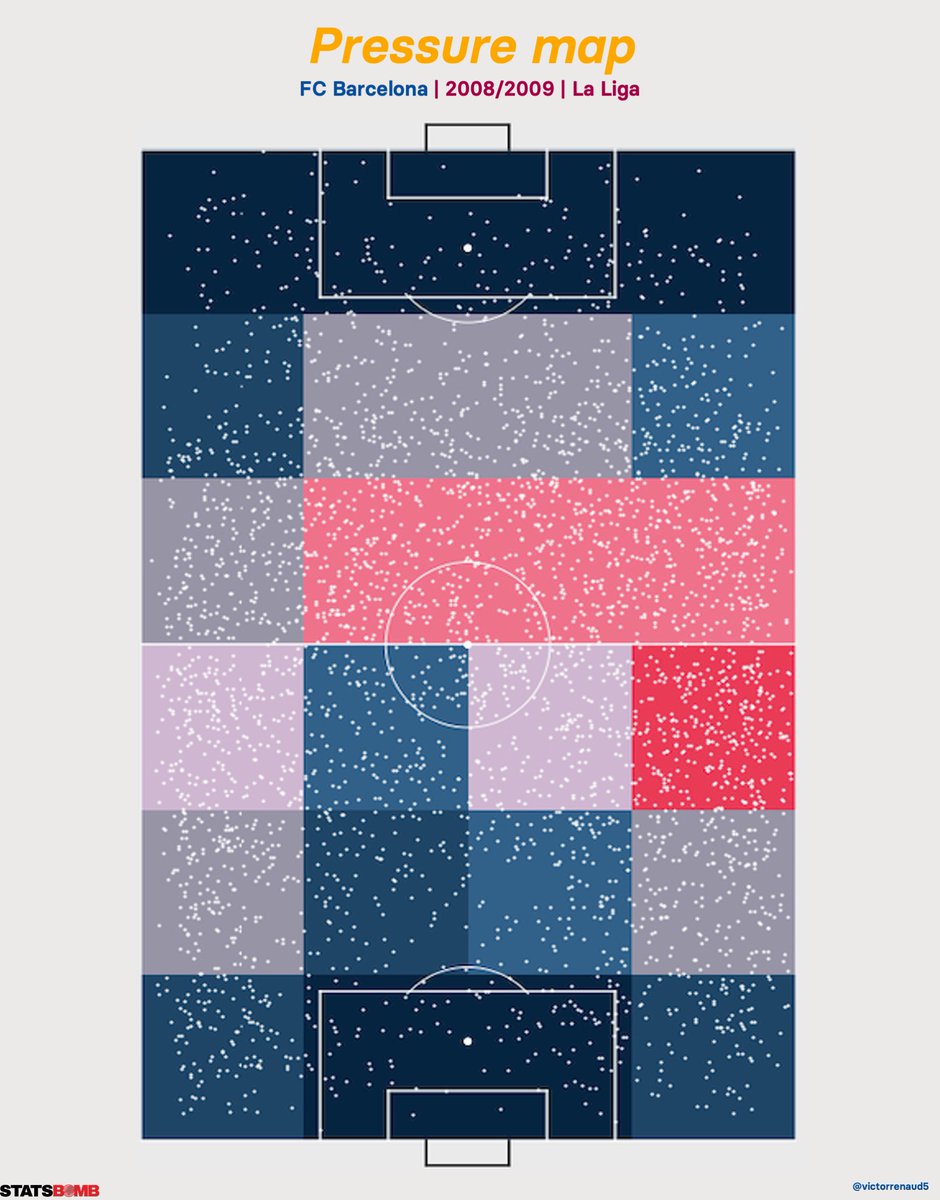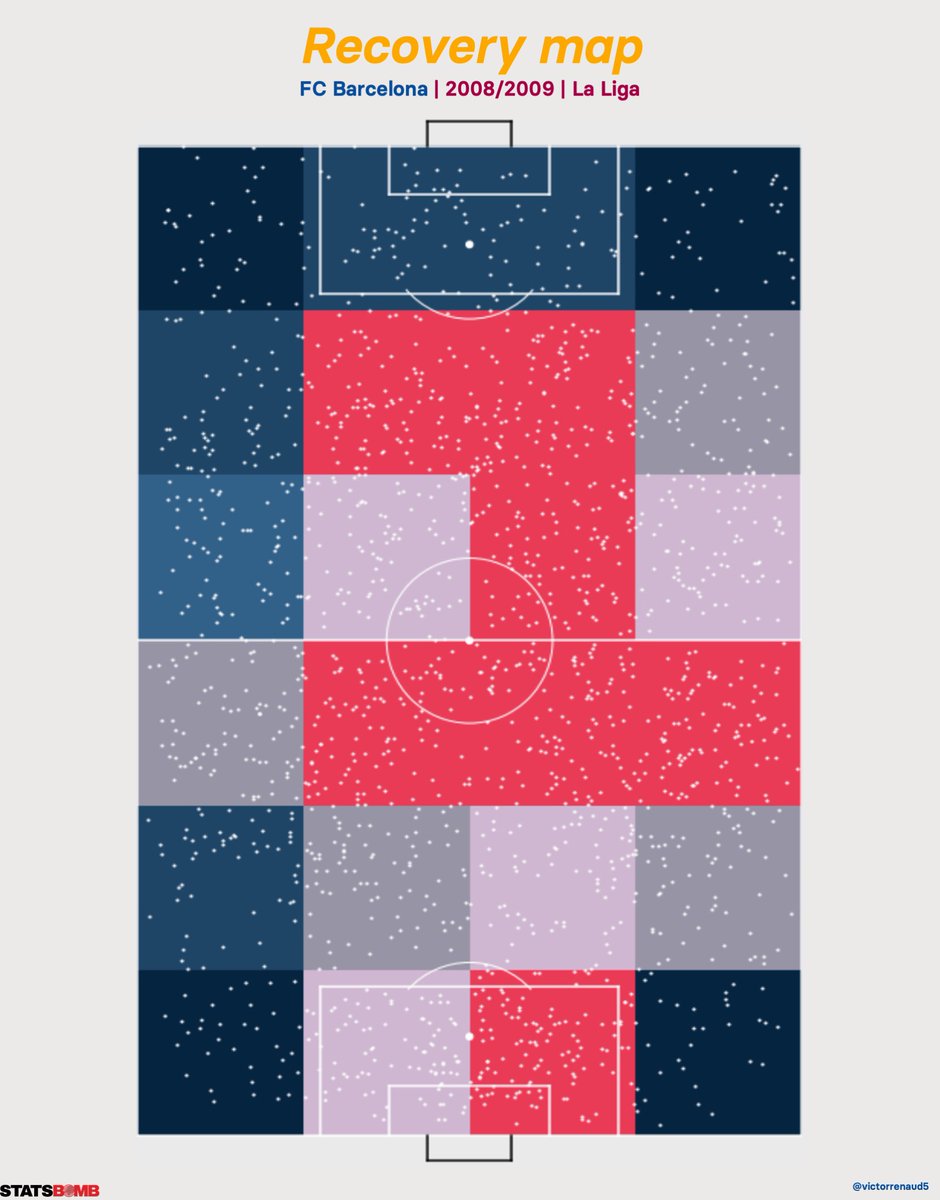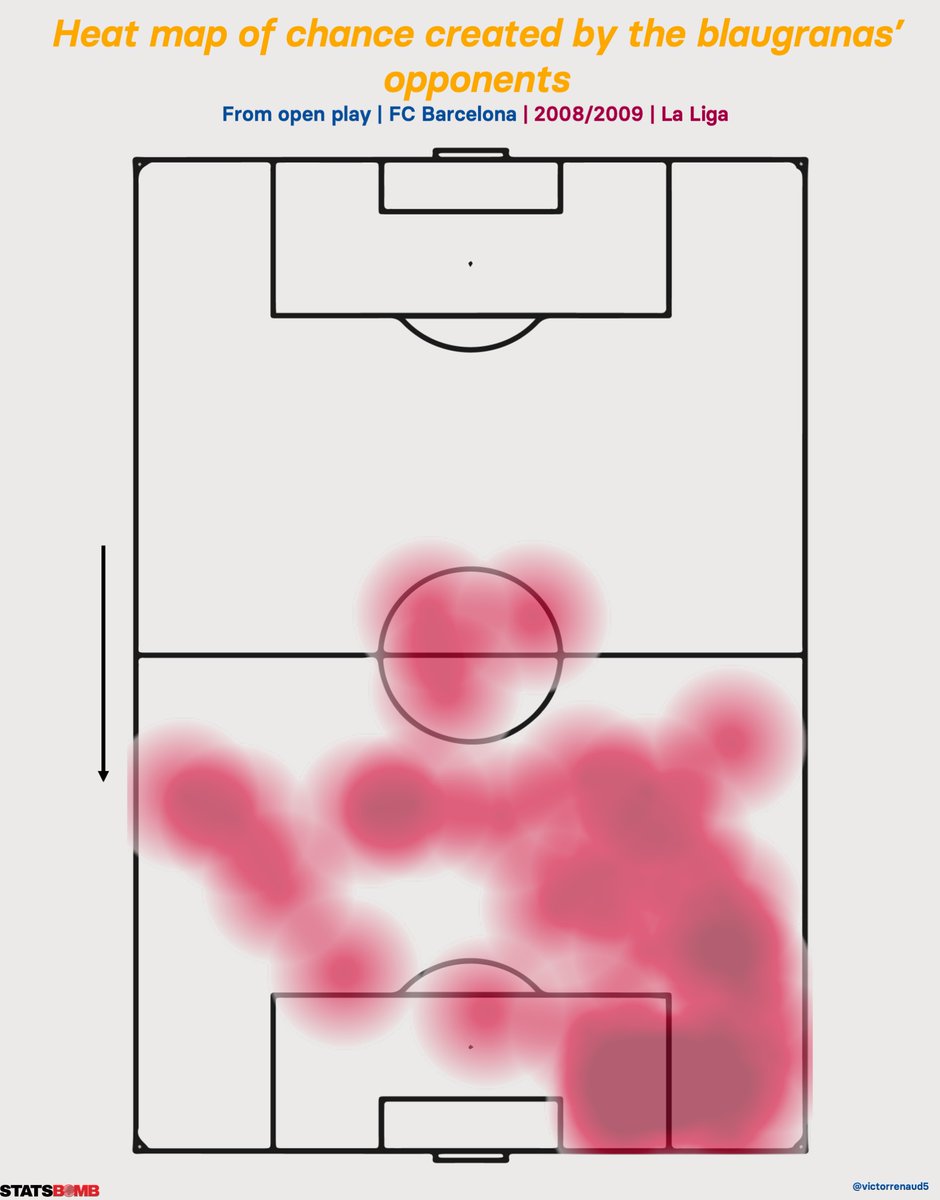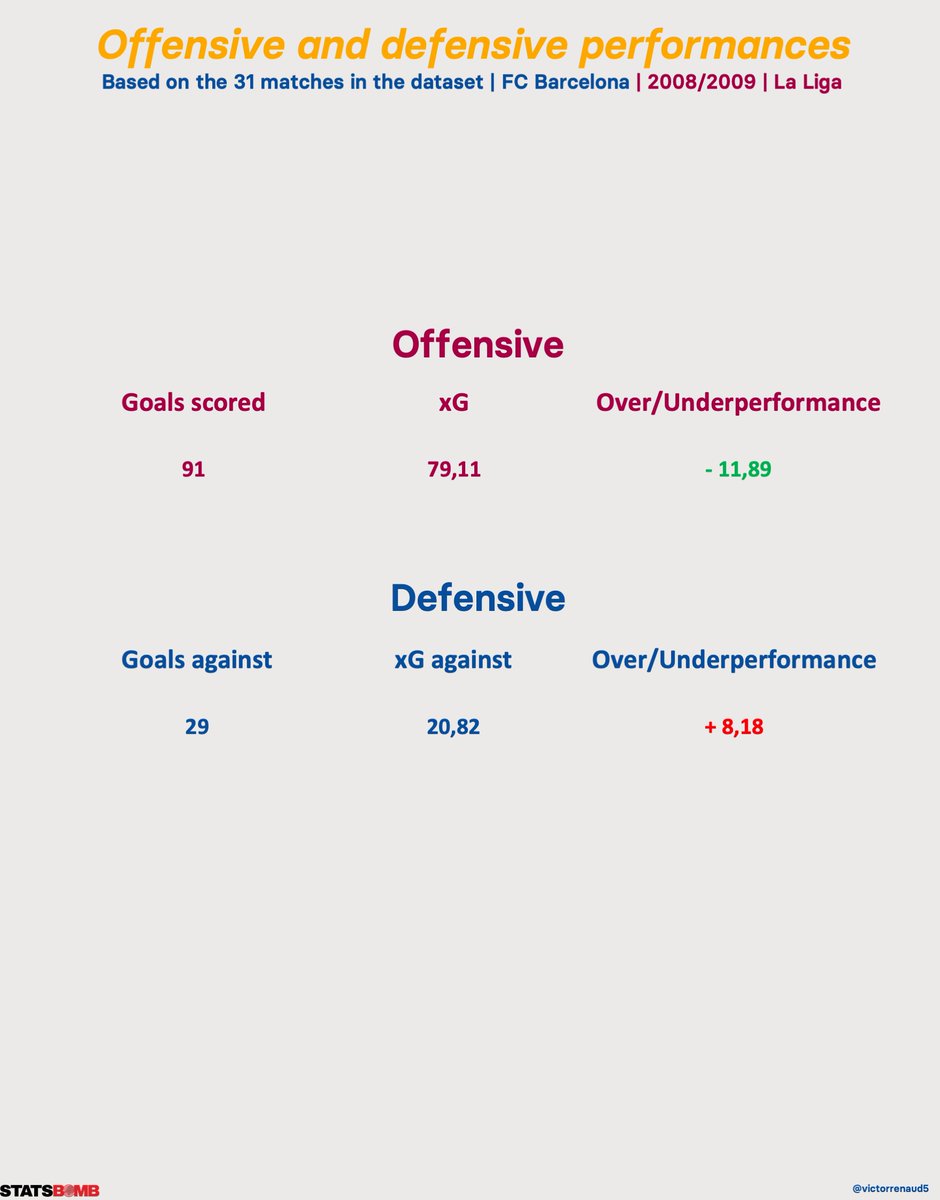Barcelona& #39;s squad was quite balanced at the beginning of the 2008/2009 season.
As a new era started with the nomination of Pep Guardiola, the team was reshaped:
-Sale of Ronaldinho and Deco among others.
-Keita, Piqué, Dani Alves arrivals and Busquets graduated from the academy.
As a new era started with the nomination of Pep Guardiola, the team was reshaped:
-Sale of Ronaldinho and Deco among others.
-Keita, Piqué, Dani Alves arrivals and Busquets graduated from the academy.
The squad was built intelligently.
- Carles Puyol to guide and support Piqué in his progression.
- Two FBs at their peak. Assisted by an experimented LB + a RB from the youth academy.
- All CMs at their peak or younger.
- Two experimented strikers to support Messi& #39;s progression.
- Carles Puyol to guide and support Piqué in his progression.
- Two FBs at their peak. Assisted by an experimented LB + a RB from the youth academy.
- All CMs at their peak or younger.
- Two experimented strikers to support Messi& #39;s progression.
First, we will focus on the principles of play and main Guardiola& #39;s ideas developed on-the-ball. Then, we will focus on off-the-ball principles.
The season& #39;s ball reception heat maps shows:
- The asymmetrical position of Abidal (LB) and Alves (RB) as he receives the ball higher
- Lionel Messi& #39;s progressive changing role, playing in a more central position
- Iniesta LCM/LW position
- 22 yo Piqué ability to play RCB and LCB
- The asymmetrical position of Abidal (LB) and Alves (RB) as he receives the ball higher
- Lionel Messi& #39;s progressive changing role, playing in a more central position
- Iniesta LCM/LW position
- 22 yo Piqué ability to play RCB and LCB
The average players position when receiving the ball is very helpful to visualize the 433 asymmetrical shape in possession:
- Dani Alves high, Lionel Messi moving in the right halfspace, respecting Guardiola& #39;s 5 channels repartition principle
- Iniesta - Xavi - YT triangle shape
- Dani Alves high, Lionel Messi moving in the right halfspace, respecting Guardiola& #39;s 5 channels repartition principle
- Iniesta - Xavi - YT triangle shape
This distribution maps help to understand some build-up patterns:
-Valdés short distribution: building from the back.
-Messi combining a lot in the right hlfsp and passing to the left hlfsp.
-Iniesta+Messi to access the penalty area
-Xavi passing concentration to the right wing.
-Valdés short distribution: building from the back.
-Messi combining a lot in the right hlfsp and passing to the left hlfsp.
-Iniesta+Messi to access the penalty area
-Xavi passing concentration to the right wing.
This 2008/2009 season was marked by the global overperformance of the three most used forwards. Indeed, Henry, Eto& #39;o and Messi scored 20%, 6% and 25% more goals respectively than they should have, according to their xG rate.
Barcelona in 2008/2009 had an important central chance creation concentration, with important peaks in the penalty area& #39;s half-spaces, for cut-backs.
This is very close to Pep Guardiola& #39;s style at Manchester City as they also mainly use those areas to make the final pass.
This is very close to Pep Guardiola& #39;s style at Manchester City as they also mainly use those areas to make the final pass.
That first Guardiola& #39;s season on the Barcelona& #39;s bench was marked by Xavi amazing final passing performance, clearly able to create from deep.
Lionel Messi& #39;s zone 14 exploitation was also remarkable and probably strengthened Pep& #39;s idea to turn him into the ultimate false 9.
Lionel Messi& #39;s zone 14 exploitation was also remarkable and probably strengthened Pep& #39;s idea to turn him into the ultimate false 9.
Another way of create: dribble. We can safely say Barcelona had, at this point, two of the best dribblers of their generation in the squad.
- Iniesta dribbles were mostly attempted in the left halfspace, very close to the goal line, in extremely small pockets of space.
- Iniesta dribbles were mostly attempted in the left halfspace, very close to the goal line, in extremely small pockets of space.
- Messi dribbled a lot into and around the penalty area, mostly in the right halfspace. The amount of dribble is very important and show how aggressive he was with the ball at his feet.
Besides, both did not hesitate to attempt dribbles very deep on the pitch.
Besides, both did not hesitate to attempt dribbles very deep on the pitch.
The shots map represents quite well what FC Barcelona& #39;s principles of play were.
- Shot taken inside the penalty area& #39;s important centrality.
- Important number of goal scored from inside the goalie area (25).
- Shot taken inside the penalty area& #39;s important centrality.
- Important number of goal scored from inside the goalie area (25).
Samuel Eto& #39;o was Barcelona& #39;s top scorer in 2008/2009 with 30 goals.
Samuel Eto& #39;o has a typical finisher shots/goals map.
- He scored only one goal from outside the penalty area.
- Goal scored important centrality.
Samuel Eto& #39;o has a typical finisher shots/goals map.
- He scored only one goal from outside the penalty area.
- Goal scored important centrality.
Lionel Messi scored 23 goals in 2008/2009 (3 penalties).
Messi has a different shots/goals map than Samuel Eto& #39;o:
Scoring 3 times from outside the penalty area, and scoring from more complicated angles, as attested by his xG overperformance (25%).
Messi has a different shots/goals map than Samuel Eto& #39;o:
Scoring 3 times from outside the penalty area, and scoring from more complicated angles, as attested by his xG overperformance (25%).
Some things never change, like those Thierry Henry& #39;s curled shots at the far post.
Let& #39;s focus now on Barcelona& #39;s off-the-ball principles:
- Extremely similar team structure to when the team is on the ball which proves Barcelona principle is to counter-press as soon as the ball is lost.
- Dani Alves applying pressure high.
- Midfield and forward high and close.
- Extremely similar team structure to when the team is on the ball which proves Barcelona principle is to counter-press as soon as the ball is lost.
- Dani Alves applying pressure high.
- Midfield and forward high and close.
Barcelona& #39;s pressure map perfectly demonstrates their pressing principles.
- Pressure applied mostly in the middle 3rd.
- Pressure trap on the right wing, in Daniel Alves& #39; area.
- Weak pressure intensity on their own 3rd, as they usually get the ball back higher.
- Pressure applied mostly in the middle 3rd.
- Pressure trap on the right wing, in Daniel Alves& #39; area.
- Weak pressure intensity on their own 3rd, as they usually get the ball back higher.
Barcelona& #39;s recovery map illustrates their amazing ability to recover the ball high.
- Obviously near their right wing& #39;s pressing trap.
- But also higher, getting the ball back without applying pressure against low blocks.
- Their recoveries& #39; centrality is impressive.
- Obviously near their right wing& #39;s pressing trap.
- But also higher, getting the ball back without applying pressure against low blocks.
- Their recoveries& #39; centrality is impressive.
Barcelona& #39;s opponents clearly target the Blaugranas& #39; right wing to create chances from open play.
- Opponents created from deep on the FCB left side as Abidal stood deeper than Alves.
- Opponents created in behind Daniel Alves, accessing dangerous areas for cross or cut-backs.
- Opponents created from deep on the FCB left side as Abidal stood deeper than Alves.
- Opponents created in behind Daniel Alves, accessing dangerous areas for cross or cut-backs.
Opponents chances created from open play visualisation clearly shows Barcelona& #39;s right wing was the main target. As Daniel Alves was positioned high when receiving and delivering pressure, the space was created behind him.
Other weakness, Barcelona conceded 37% of goals from set play, which is important.
Moreover, Barcelona defence underperformed as they conceded 29 goals from 20,82 xG.
This means they should have conceded 8 fewer goals.
Moreover, Barcelona defence underperformed as they conceded 29 goals from 20,82 xG.
This means they should have conceded 8 fewer goals.
The first Guardiola& #39;s season on Barcelona& #39;s bench was a success. The Catalan led the team to the first treble in Spanish football history (La Liga, CdelRey, UCL).
The right squad building choices, positional play, and pressing principles among other things were probably the key.
The right squad building choices, positional play, and pressing principles among other things were probably the key.
END OF THE THREAD.
Thank you:
- @thevideoanalyst @nandy_sd for you amazing guides.
- @slothfulwave612 for your help.
- @StatsBomb for the amazing free data.
Work inspired by @EveryTeam_Mark and his stunning Arsenal 2003/2004 analysis.
Thank you:
- @thevideoanalyst @nandy_sd for you amazing guides.
- @slothfulwave612 for your help.
- @StatsBomb for the amazing free data.
Work inspired by @EveryTeam_Mark and his stunning Arsenal 2003/2004 analysis.

 Read on Twitter
Read on Twitter